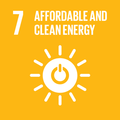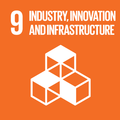This solution uses a biogas plant to convert food waste from restaurants and cafeterias into renewable energy and natural fertiliser for food production.
In restaurants and cafeterias, small BioTrans collection units grind food waste and peelings into homogeneous biomass. The food waste is then pumped into a closed, odour-free tank where it is collected and stored for several weeks at ambient temperature. From there, the biomass is regularly hauled to large plants where it is recycled into biogas and used as renewable energy for heating and electricity.
The low content of contaminants makes the food waste biomass from the BioTrans System easy to handle for biogas plants. Also, the by-product of the biogas production process is utilised as fertiliser for agriculture.
The BioTrans System creates a better working environment and hygiene in the kitchens.
Søren Jeberg – CEO, BioTrans Nordic.
Why you should care
Consumer and retail food waste accounts for more than 40% of total food losses in industrialised countries. By processing this waste on site, BioTrans Nordic can help companies and restaurants convert an expense into profit, through the production of biogas and fertiliser.
How the Global Goals are addressed

Affordable and Clean Energy
Biogas produced from food waste is almost carbon neutral and it can displace generation of heat and electricity from fossil fuels.

Industry, Innovation, and Infrastructure
By generating natural gas from food scraps, the food industry can use its waste products to help make itself more resource-efficient and sustainable.

Climate Action
Reducing demand for heating and electricity by using biogas from waste food can help to lower carbon emissions. BioTrans Nordic estimate that their solution has helped to cut CO2 emissions by 35% where installed.


